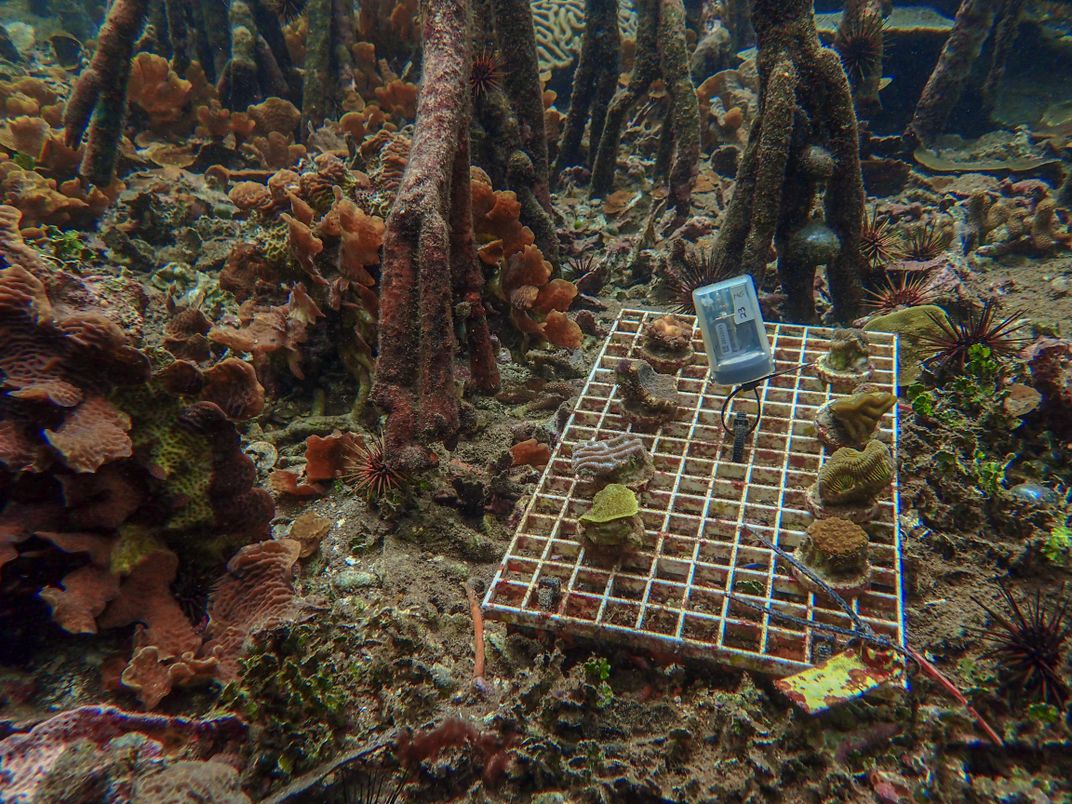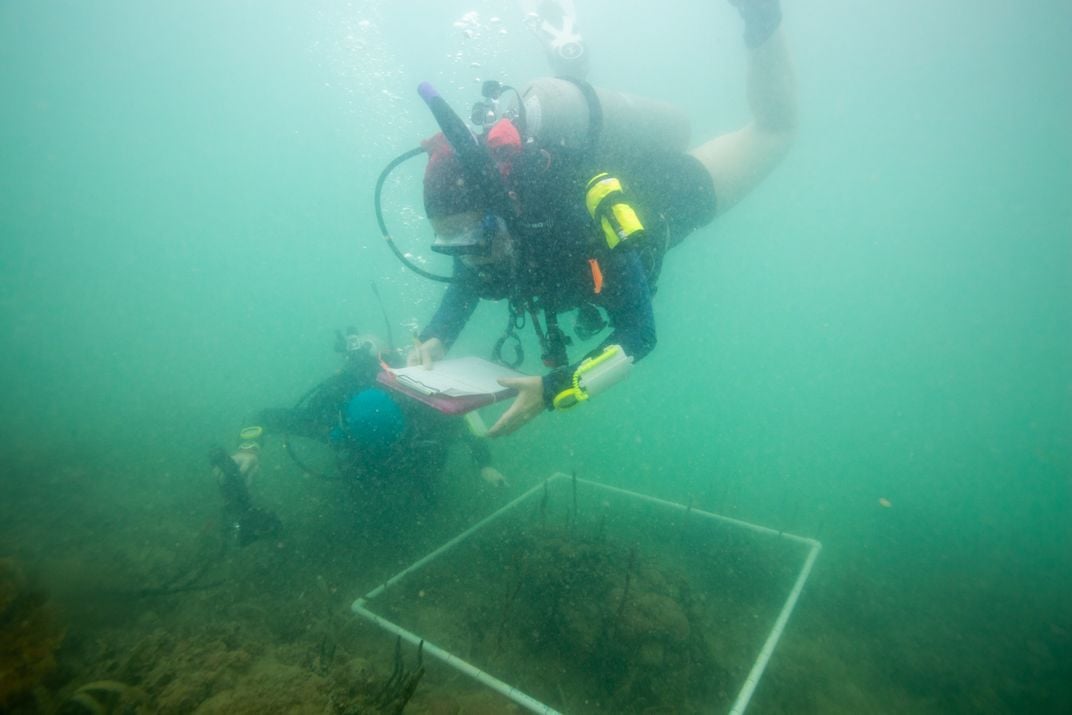SMITHSONIAN TROPICAL RESEARCH INSTITUTE
Caribbean Mangrove Forests May Serve as Coral Shelters
In the Bocas del Toro mangrove forests, in Panama’s Caribbean coast, an unexpected phenomenon may be helping stressed out corals cope with climate change. Credit: Jorge Alemán
/https://tf-cmsv2-smithsonianmag-media.s3.amazonaws.com/blogging/featured/heather_stewart_lab_water_day_2_2019-83.jpg)
In Panama’s Caribbean coast, an unexpected occurrence may be helping stressed out corals cope with climate change. Reef and mangrove habitats often grow side by side, without overlap. However, in the Bocas del Toro archipelago, a diversity of coral species can be found growing several meters into the mangrove forests. Heather Stewart, a former doctoral fellow at the Smithsonian Tropical Research Institute (STRI), explored how this adaptation may influence coral survival.
For the past several decades, the health of our oceans has been severely threatened by human activities. Caribbean reefs have been among the most hard-hit habitats, and they continue to be exposed to local threats, such as pollution and overfishing. In the long run, these stressors may increase their susceptibility to global warming phenomena, such as ocean warming and acidification. Because of their increased exposure to the sun, coral species in shallow reefs are particularly at risk of bleaching, which may leave them more vulnerable to diseases and death.
By expanding into the mangrove forests in Bocas del Toro, corals could be seeking refuge from unfavorable environmental conditions on the reef. Stewart wondered if this unusual behavior had to do with the shade or with the mangroves per se, so she exposed a variety of coral species to sunny and shaded environments in both the reef and the mangrove forests. Her experiments revealed that most of them fared better in less sunlight, even those adapted to the sunnier shallow reef habitat.

“Our experimental manipulation of light in mangrove and reef habitats indicated that light intensity is a key environmental parameter mediating coral bleaching and survival, suggesting that mangroves could be a refuge from high light intensity on the shallow reef,” said Stewart, now a Mangrove Restoration Postdoctoral Associate at the University of the Virgin Islands working on the National Science Foundation EPSCoR “Ridge to Reef” project.
These findings, which were recently published in Ecosphere, indicate that the future of shallow reef corals may depend on their ability to adapt to changing environmental conditions, but also on the availability of refuge habitats such as mangrove forests, to maintain coral diversity.
"It is essential that more mangrove habitats are protected, especially in regions where they provide a habitat for corals, and their protection should be a component of the conservation goal of protecting 30% of marine habitat globally by 2030," said STRI staff scientist David Kline, one of the co-authors on the paper.
Given the urgency of applying scientific knowledge to the management of these coastal ecosystems, Stewart finds it essential to bring together local communities, NGOs, government agencies, and researchers in local and global initiatives to conserve and restore mangrove forests. Stewart is also part of several clean-up and outreach events planned for the International Day for the Conservation of the Mangrove Ecosystem on July 26th and is working with the Mangrove Action Project in their children's art contest and mangrove calendar.

Reference: Stewart, H.A., Kline, D.I., Chapman, L.J., Altieri, A.H. Caribbean mangrove forests act as coral refugia by reducing light stress and increasing coral richness. Ecosphere (2021). https://doi.org/10.1002/ecs2.3413

